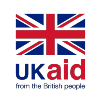While the worst forms of child labour (WFCL) is not only an urban phenomenon, evidence suggests that WFCL emerges in cities in unique ways due to the complex structures and dynamics of urban systems.
This report, therefore, develops a conceptual framework for WFCL in cities that integrates key understandings of urban systems and evidence about urban WFCL. This report reviews current literature on the complex systemic nature of cities – drawing on literature on the urban land nexus, urban complexity, informality, and inclusive urbanisation. It also reviews studies of child labour (focusing on the worst forms, where possible) in urban contexts. In this way, the report offers an innovative way of understanding the challenge of WFCL, and outlines the premises of a research agenda for responding to WFCL in cities. These contributions are made with the specific cities and neighbourhoods in mind where the CLARISSA programme is being implemented; however, they should be useful more generally.
Citation
Kasper, E. (2021) Urban Neighbourhood Dynamics and the Worst Forms of Child Labour, CLARISSA Working Paper 9, Brighton: Institute of Development Studies, DOI: 10.19088/CLARISSA.2021.007
 Download full article
Download full article